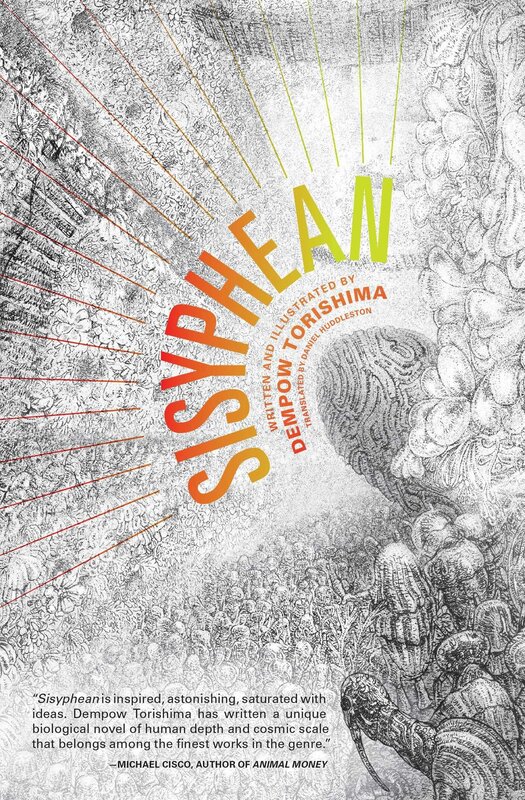Torishima’s world is one that has been taken to extremes: the extremes of capitalism, the extremes of science, the extremes of humanity. Everything is made of flesh, even inanimate objects, and it’s common to have insect parts for bodies – carapaces, thoraxes, mandibles. His descriptions of this future’s inhabitants and their surroundings are vivid and often grotesque. While this isn’t a world anyone would want to live in, it’s fascinating to read about.
It’s not an easy read, by any means. Torishima basically throws you straight into the world without much in the way of explanation, so it’s a job to keep up with what’s going on. There were times when I had to read a passage multiple times to understand it, and even then I didn’t always manage. This didn’t detract from my reading experience at all, however, and actually made me enjoy it more. The sense of achievement I had afterwards made the effort worthwhile.
The book includes Torishima’s own illustrations, which for me were a highlight. The pictures are intricate and detailed, featuring mesmerising patterns and strange creatures. They helped a lot with visualising parts of the stories that were unclear, and I spent a good amount of time roaming my eye over each one. Also of note was the use of language – the translation (from the original Japanese) was by Daniel Huddlestone, and given its complexity I can’t imagine how hard it must have been to do. There’s a lot of wordplay and neologisms, and at one point manages to use an 87-letter compound word that I can’t copy here because it would mess up the formatting (though you can read it here).
Torishima won the 2011 Sogen SF Short Story Prize for the first story in this book, also titled ‘Sisyphean’, and it’s not hard to see why. I wouldn’t say this book is for everyone, but I thought it was fantastic. While challenging and dense, it was also rewarding, even though I didn’t always understand what was happening. It’s rare to find a book that can truly be called original and unique, but Sisyphean is both those things and more. It’s ambitious, intelligent, imaginative, and thought-provoking. I can honestly say I’ve never read anything like it.
Review by Charlie Alcock

 RSS Feed
RSS Feed
